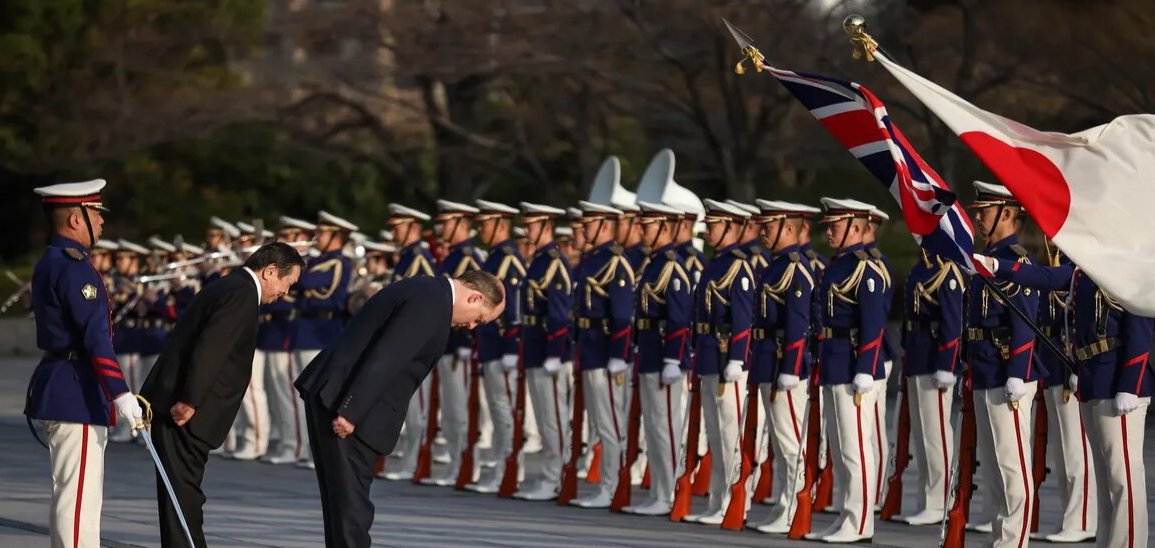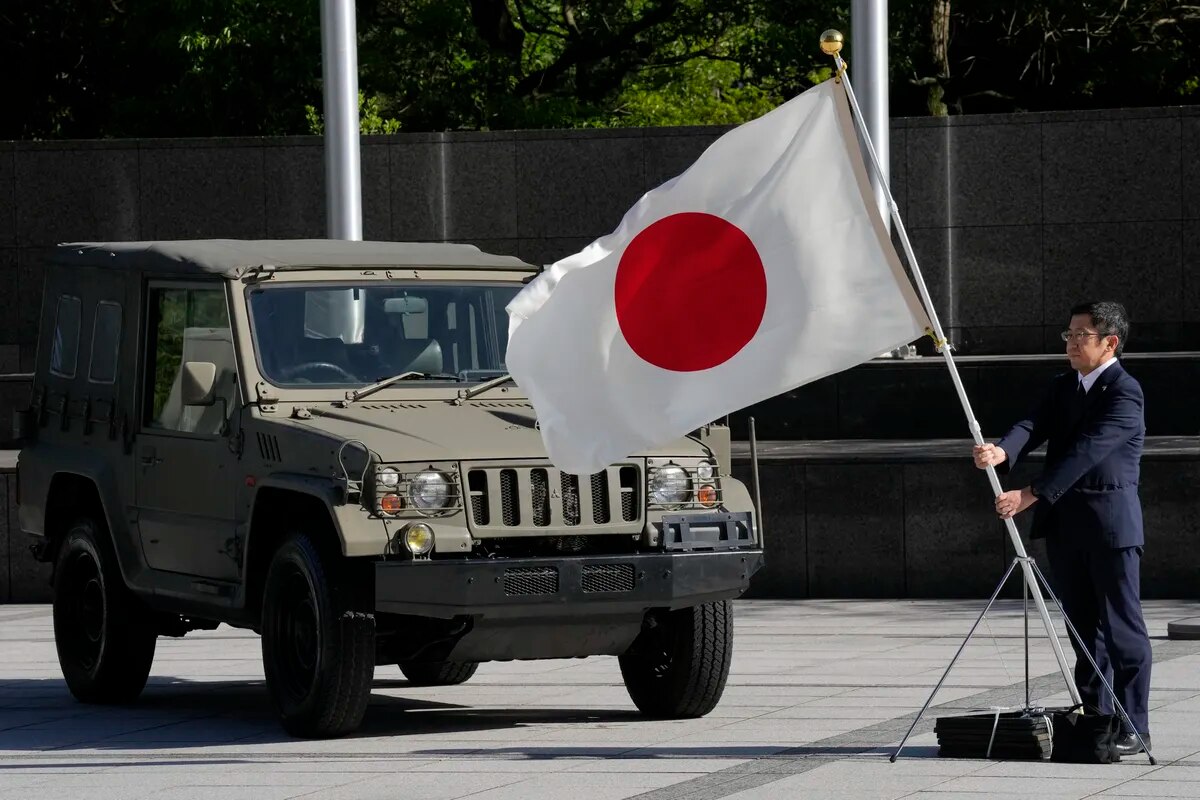A Return to Militarism?
September 30, 2023 | Expert Insights

Japan needs no certification for its strong military traditions, a nation that had never been occupied by any foreign power in its entire history until its cataclysmic defeat in August 1945. That it concurred to comprehensively dismantle its militaristic traditions and culture under the prodding of the victorious allied power and, more importantly, retained this new culture further reinforces its image of a stoic and strong-willed nation.
However, global geopolitical tremors may compel the Japanese nation to reassess its military outreach beyond its stormy shores.
In the next five years, Japan intends to spend over two and a half times on its Self-Defence Forces the amount it has spent in the last five years. This is a part of Japan’s recent divergence from its longstanding practice of self-limiting its defence spending as it now begins to increase its military development.
In the face of increasingly belligerent activity by its regional neighbours China and North Korea, as well as Russia's invasion of Ukraine, Japan has been forced out of its decades-long restrictions on its military forces. With China's aggressive military buildup and North Korea's growing missile arsenal, Japan has started expanding and upgrading its military capabilities. This marks a sharp shift in its military approach.
Background
Japan’s restrained military policy dates to 1947, when it was under Allied occupation after its defeat in World War II. In the aftermath of the war, the victorious Allies implemented changes in the constitutions of Axis powers like Germany and Japan, apparently to prevent a repeat of such a devastating war.
The constitution drafted for Japan went much further in restricting militarism. The U.S., which was leading the occupation of Japan, inserted Article 9, a provision that renounces war and limits the use of force, forbidding the formation of a traditional military force. The constitution has remained unchanged since then. Post-war fatigue and disillusionment made the Japanese willing to accept the doctrine. This pacifist approach with military functions limited to self-defence was also supported by the promises of U.S. security guarantees.
Given its past aggressive military and expansionist imperial policy, Japan was keen to allay concerns in Asia and around the world. During the decades after World War II, Tokyo self-limited its defence budgets to 1 per cent of its GDP and maintained only a Self Defence Force (SDF), reinforcing its image as a non-belligerent nation, inoffensive and incapable of another episode of imperial conquest.
As the world increasingly acknowledged Japan as an economic powerhouse rather than a military power, the Japanese public supported this policy, which enabled Japan's rise as a leading manufacturer of high-value exports in electronics and automobiles. Flush with funds, successive governments have considered bringing their military at par with their other nations by increasing the defence budget and revising/ reinterpreting the restrictive clauses of the Constitution. However, there has been considerable public opposition to such moves.
The entry of a belligerent power like China into the world stage has changed the game. Japan lives in a dangerous neighbourhood with China and North Korea regularly flexing their military muscles; historically, Japan has disputes with both. In some ways, Russia is also an Asian power and after Ukraine and its growing military ties with China and North Korea makes, Moscow too a threat in being for the Japanese islands.
Emphasising security in the Indo-Pacific, Japan introduced major changes to its military doctrine under Shinzo Abe's government. It expanded the function of the Japan Self-Defence Forces, and the Cabinet reinterpreted Article 9 to allow the military to fight even overseas in support of an ally under attack. A longtime Japanese diplomat argued that it was the responsibility of Tokyo and Washington to maintain order in the Indo-Pacific region in the face of geopolitical uncertainty.
These changes were continued under successive governments of the Liberal Democratic Party.

Analysis
Under current Prime Minister Fumio Kishida from the same party, drastic changes have been approved in three strategy documents – the National Security Strategy, National Defence Strategy, and Defence Buildup Program.
The National Security Strategy particularly notes China's intensified military activities, including in the East and South China Seas, its intrusions into territorial waters and airspace around the disputed Senkaku Islands (controlled by Japan) in the East China Sea, and its activity in the Sea of Japan, the Pacific Ocean and other areas that affect Japan's national security.
After years of economic stagnation resulting in frozen military spending, Japan is now looking to upgrade its air and maritime defence systems. It is also looking to advance its military technologies - in light of new advancements by its neighbours - including its space and cyber capabilities. It has cooperated closely with the U.S. in this process, which has encouraged it to improve its military capabilities.
A significant indicator of Japan's pivot towards a militaristic approach is its military spending, which grew faster than its GDP in 2017. Shinzo Abe declared that Japan would not follow the 1 per cent limit anymore and it exceeded the 1 per cent limit in 2020. By 2021, spending had reached the highest annual growth rate since 1972. The Japanese government aims for spending to reach 2 per cent of its GDP in 2027. The plans will likely persist, given the strong position of the Liberal Democratic Party in Japanese politics.
Japan's military plans to acquire new weapon systems (like aircraft, ships, and long-range missiles) for counter strike, enabling it to target an enemy territory upon an attack on Japan. More than 80 per cent of the planned aircraft and most of the long-range missiles will be bought from the U.S.
The Japanese-controlled Senkaku islands are a major source of geopolitical tension between China, Japan, and Taiwan. Japan recently moved hundreds of troops and missile units to an uninhabited island near the Senkaku islands to increase its military bases in Okinawa (the group of 150 islands in the East China Sea that curves to the south of Japan's main islands). It has also allowed the U.S. to build up a heavy military presence in Okinawa. On the one hand, Japan is keen to deter China from using force against Taiwan that could threaten Japanese territory and regional security. On the other hand, residents of the Okinawa islands are alarmed by the rapid military buildup by Japan and the U.S. in the area. Up to a third of Okinawans died at the hands of Japanese and U.S. troops during a bloody U.S. campaign to take over the islands as a part of its battle with Imperial Japan.
Japan also has a long-standing dispute with Russia over the Kurils Islands, a group of four islands under Russian occupation since the end of World War II when the USSR declared war on Imperial Japan in the dying moments of the war. The Soviets deported all the Japanese citizens from these islands and brought in Russians to inhabit them and exploit their maritime resources, especially the rich fishing grounds around them. The dispute caused both countries not to sign a peace treaty, signalling the end of World War II!
Japan's drastic shift in military policy has provoked criticism from China, Russia, and North Korea. North Korea, which has recently strengthened its relations with China and Russia, has criticised Japan's military buildup and its longstanding alliance with the U.S. Setting these fears to rest, an article in the Diplomat of April 16, 2014, says, "The nature of Japan's civil-military relations today makes it highly unlikely that the country could be militaristic again, much less imperialistic, rendering such concern invalid. While that alone is enough to weaken the "return to militarism" argument, other factors further discredit it. Among them are Tokyo's robust alliance with the world's leading liberal democracy, its dependence on global trade and production-supply chains, and the economic security and benefits the postwar international order provides.”
Assessment
- From expanding the function of its military to increasing military spending and building up military bases in Okinawa, it can be inferred that Japan has pivoted to a more militaristic approach. However, these measures may also be justified in light of increasing regional insecurity due to belligerent neighbours.
- If the planned increase in defence spending occurs, Japan would join several other countries in the Indo-Pacific that are hiking up military spending. Considering this regional context, dialogue, cooperation, and trust-building efforts are needed to ensure that rising militarism does not exacerbate regional geopolitical tensions and spark conflict.
- Nations like China and the Koreas that suffered under Imperial Japan's military yoke for centuries justifiably ring alarm bells as Japan reinvigorates its military traditions and capabilities. However, being alarmist is not justified as the strong nature of civil supremacy and its equation with the military in Japan makes it highly unlikely for a return to a militaristic Japan, much less an imperialistic one.








Comments